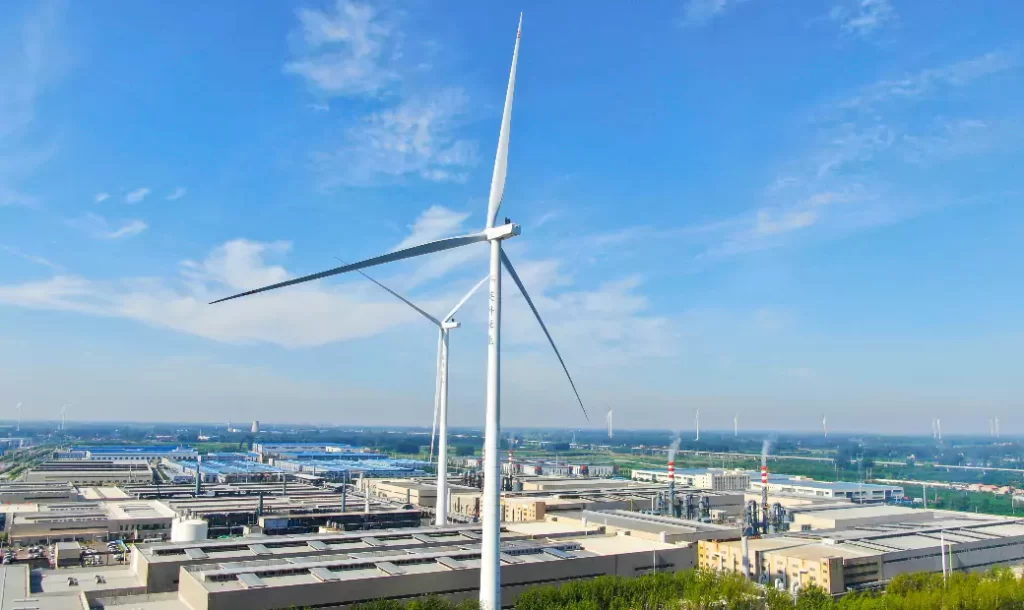Contact Us
Global Electric Wheelchair Factory Trends: Automation, Sustainability, and Export Growth
2025-08-18
The global electric wheelchair factory sector is experiencing profound transformation. Driven by automation, sustainability, and rising export demand, manufacturers are adopting innovative strategies to remain competitive in a rapidly expanding market. These trends reflect both technological innovation and demographic shifts, as aging populations, accessibility awareness, and healthcare investments continue to rise worldwide.

Automation and Smart Manufacturing
Automation has become central to modern wheelchair production. Factories increasingly rely on robotics, automated welding, and intelligent logistics systems to improve efficiency and maintain consistent quality. Automated inventory tracking, predictive maintenance, and quality inspection systems help reduce errors and speed up delivery, while also enhancing safety for factory workers.
Advanced factories are now incorporating AI-driven predictive maintenance and digital twin technologies, which simulate production lines to identify inefficiencies and potential failures before they occur. This not only reduces downtime but also optimizes resource allocation and energy use across the facility.
Automation Drivers in Electric Wheelchair Factories
| Driver | Impact on Production | Timeframe |
| Robotics in assembly | Consistent output | Medium |
| Automated quality control systems | Higher reliability | Long-term |
| AI-driven predictive maintenance | Reduced downtime | Medium |
| Smart logistics & warehousing | Reduced lead times | Short-term |
| Demand for foldable wheelchairs | Flexible production | Medium |
These automation drivers are especially critical for factories looking to scale operations efficiently in response to surging demand in multiple regions.
Sustainability in Factory Operations
Sustainability has evolved from a corporate social responsibility initiative into a strategic requirement for modern manufacturing. According to Medical Tech Outlook, medical device factories—including wheelchair manufacturers—are adopting eco-friendly materials, energy-efficient processes, and waste reduction systems to comply with environmental regulations and meet stakeholder expectations [¹].
A notable example comes from INTCO Medical, which in July 2025 connected its 11.2 MW wind power project to the grid at its Anhui manufacturing base. The project features two turbines expected to generate over 20,000 MWh annually, cutting more than 17,000 tons of CO₂ emissions per year. By integrating renewable energy, INTCO not only reduces environmental impact but also demonstrates the economic benefits of sustainable operations, such as lower energy costs and resilience against power fluctuations.

Factories are also increasingly using recycled and circular materials in wheelchair frames, cushioning, and packaging. Sustainable supply chain practices, including reducing transportation emissions and sourcing eco-certified components, have become central to factory strategy. These measures not only meet regulatory requirements but also align with growing consumer and institutional demand for environmentally responsible products.
Export Growth and Global Market Expansion
Global demand for electric wheelchairs continues to rise. Aging populations, higher rates of mobility impairment, and increasing healthcare investments are driving both individual and institutional purchases. Market research from Straits Research projects that the global electric wheelchair market will grow from USD 4.35 billion in 2024 to nearly USD 11.97 billion by 2033, reflecting a CAGR of 11.9% [²].
| Metric | Value |
| Market size (2024) | USD 4.35 billion |
| Forecast market size (2033) | USD 11.97 billion |
| Compound Annual Growth Rate (CAGR) | 11.90% |
| High-growth region | Asia-Pacific |
According to GlobeNewswire, North America and Europe remain dominant markets due to mature healthcare infrastructure, high adoption of assistive technologies, and well-established distribution networks. Meanwhile, the Asia-Pacific region is expected to register the fastest growth due to improving healthcare systems, rising disposable income, and increased awareness of mobility solutions [³].
This export growth requires factories to optimize production lines, strengthen logistics, and comply with diverse international regulations, including product safety standards, import tariffs, and shipping protocols. Advanced planning and factory automation play a crucial role in enabling manufacturers to scale production while maintaining quality and meeting strict delivery timelines.
Integration of Technology and Market Strategy
Modern electric wheelchair factories are increasingly leveraging Internet of Things (IoT) technologies to connect machinery, monitor energy usage, and collect real-time production data. These systems allow managers to adjust operations dynamically, reducing waste and improving productivity.
Digital platforms also support customization for international markets, enabling manufacturers to tailor wheelchairs according to regional preferences, such as weight restrictions, foldable designs, and battery capacity. By combining smart manufacturing with responsive market strategies, factories can strengthen their competitive position and expand global reach.
Conclusion
The electric wheelchair manufacturing industry is evolving around three key pillars:
-
Automation: Robotics, predictive maintenance, and digital twins ensure efficient, high-quality production.
-
Sustainability: Renewable energy, recycled materials, and green supply chains reduce environmental impact.
-
Export growth: Global demand and regional market differences drive production scale and distribution strategies.
Companies like INTCO Medical, combining smart manufacturing with sustainable operations, illustrate how factories can achieve both economic and environmental benefits. The coming decade promises continued growth, with technology and global trade shaping the next generation of electric wheelchair factories.
References
[¹] Medical Tech Outlook. (2024). Sustainable practices in medical device manufacturing. Retrieved from https://www.medicaltechoutlookapac.com/news/sustainable-practices-in-medical-device-manufacturing-nwid-3760.html
[²] Straits Research. (2025). Electric wheelchairs market size, forecast, and analysis (2024–2033). Retrieved from https://straitsresearch.com/report/electric-wheelchairs-market
[³] GlobeNewswire. (2025, January 30). Electric Wheelchairs Market Size is Expected to Reach USD 11.97 Billion by 2033, Growing at a CAGR of 11.90% – Straits Research. Retrieved from https://www.globenewswire.com/news-release/2025/1/30/3018227/0/en/Electric-Wheelchairs-Market-Size-is-Expected-to-Reach-USD-11-97-Billion-by-2033-Growing-at-a-CAGR-of-11-90-Straits-Research.html


